Law Doesn’t Protect Water From Pesticides
Despited “strict” state law, one-third of private drinking wells are contaminated.
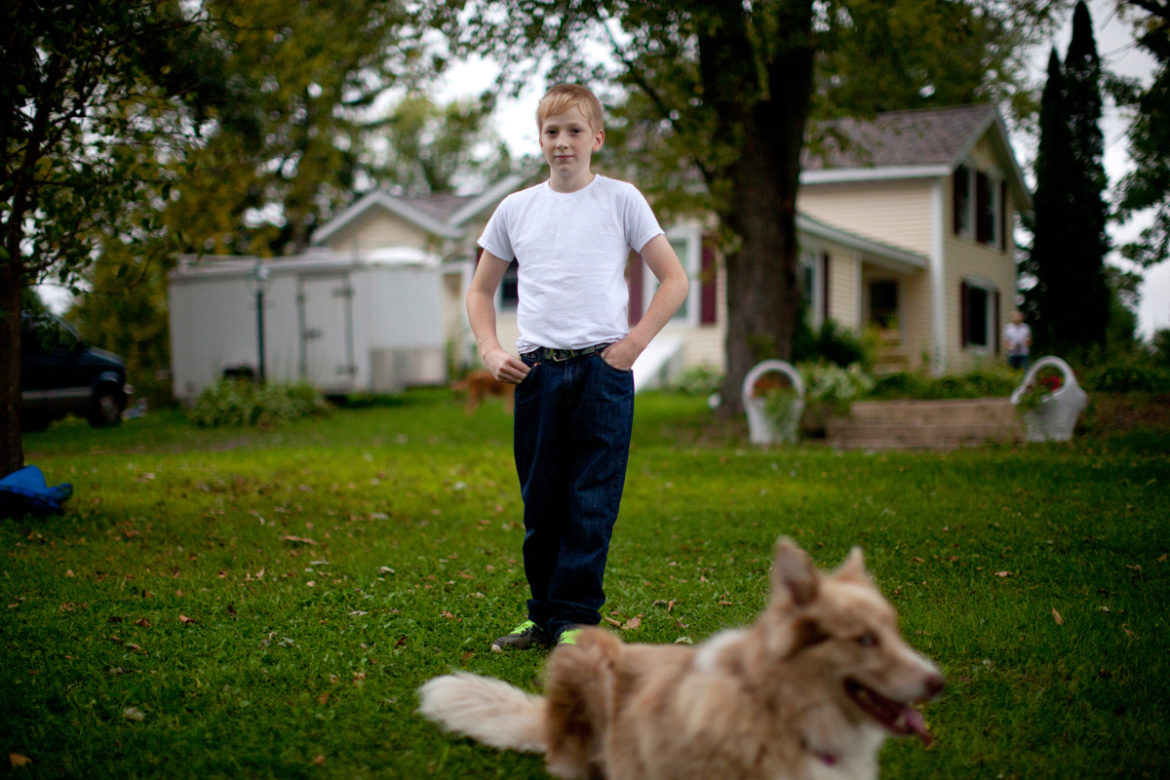
Jacob Reeves, pictured at home in Stoughton, was diagnosed in 2014 with juvenile dermatomyositis — a rare disease that his mother Dawn attributes to the high level of atrazine found in their well water. “I only cried once,” Dawn Reeves said, “when they said he might not walk again.” Photo by Coburn Dukehart of the Wisconsin Center for Investigative Journalism.
In 2014, Doug and Dawn Reeves discovered the well supplying water to their home in rural Stoughton was contaminated with atrazine, despite the fact that they live in an area where use of the pesticide has been banned for 20 years.During an Easter celebration that year, their son Jacob, fell ill, his body swelling up. Then he developed an unusual rash. After multiple hospital visits, a doctor at American Family Children’s Hospital in Madison diagnosed Jacob, now 11, with juvenile dermatomyositis.
It is a rare inflammatory disease that affects muscles, skin and blood vessels, afflicting just 3 out of every 1 million children each year, according to the American College of Rheumatology.
The cause of the disease is unknown, so Dawn Reeves went looking for answers as to why the second youngest of their five children suddenly fell ill. She started with the well at their home about 20 miles southeast of Madison.
Results from Wisconsin State Laboratory of Hygiene found the family’s water was contaminated with three fertilizers and pesticides. Most surprising was the weed killer atrazine, which is banned from use in the area where the Reeves family lives. It was found at twice the state and federal drinking water health standard.
Follow-up testing by the state Department of Agriculture, Trade and Consumer Protection found 8.2 parts per billion of atrazine — nearly triple the state health standard — present in the water they drank every day.

The Reeves family is among the roughly 940,000 Wisconsin households that rely on private wells for their water. Dawn and Doug Reeves bought their property near Stoughton. because of its picturesque rural setting, but they now want to sell their home because of their experience with tainted drinking water. Photo by Coburn Dukehart of the Wisconsin Center for Investigative Journalism.
In a letter, DATCP warned that “Long-term exposure to atrazine may cause a variety of health problems, including weight loss, heart damage and muscle spasms.”
When it comes to pesticides — including insecticides, herbicides and fungicides — in our water, the Wisconsin Center for Investigative Journalism has found:
- One-third of private drinking water wells in Wisconsin had pesticide contamination, according to the most recent comprehensive statewide survey;
- Nearly two-thirds of the more than 90 different pesticides used on Wisconsin crops lack a health standard for water;
- Wisconsin’s atrazine rules, which are described as the strictest in the country, have significantly cut use of the herbicide and led to a sharp decline in the number of wells tainted with atrazine;
- But atrazine restrictions in Wisconsin have been replaced by increased use of other herbicides, whose effects on humans are still not well understood; and
- The federal government’s proposal to further restrict atrazine is facing pushback from agricultural groups in Wisconsin and the state’s Republican U.S. senator, Ron Johnson.
Atrazine has been one of the most widely used herbicides in the United States for decades, according to the U.S. Department of Agriculture. The pesticide manufacturer Syngenta advertises the weed killer as “safe for people, good for the environment and the economy.”

Pesticide maker Syngenta advertises atrazine as safe to people and the environment. But the U.S. Environmental Protection Agency is proposing additional restrictions, finding atrazine is dangerous to plants and animals. Screen shot via www.atrazine.com.
But atrazine is considered an endocrine disruptor and has been tied to abnormal sexual development in animals. The endocrine system regulates blood sugar, reproductive systems, metabolism and development of the brain and nervous systems.
A recent U.S. Environmental Protection Agency draft risk assessment found that atrazine is dangerous to a variety of plants and animals both on land and in water.

Jacob Reeves is shown in the hospital in 2014 while being treated for the extremely rare disease, juvenile dermatomyositis. During his treatment, Jacob received heavy doses of steroids, as well as an immunoglobulin treatment that combines antibodies from 1,000 different donors. Photo courtesy of the Reeves Family.
Testing of the Reeves’ well also detected 19.2 parts per million of nitrate — almost double the state health standard of 10 ppm — and levels of the pesticide alachlor below the state health standard. Nitrate, which comes from nitrogen-based fertilizers, is dangerous to pregnant women and can cause potentially fatal “blue baby syndrome,” in which blood cells lose the ability to carry oxygen.
The testing results made Dawn Reeves believe Jacob’s sudden illness was caused by the water.
“In my opinion? It wasn’t a (three-in-one-million) rare disease, it was atrazine poisoning to the extreme,” she said. “It blew (the doctors) away and all of their statistics out of the water. That’s why I’m leaning toward the poison. I really think it was the atrazine.”
Although there is no direct evidence that supports her theory, the exact health effects of long-term consumption of water containing pesticides are “not completely understood,” according to the state Department of Natural Resources. The agency says, however, that exposure could increase susceptibility to “certain diseases, including cancer.”
The EPA is considering further federal restrictions on atrazine, but has gotten strong opposition from agricultural groups, including some in Wisconsin.
Johnson has called on the agency to explain the rationale for the proposed rules, which he said would impose “harmful restrictions on Wisconsin farmers.”
One-third of wells contaminated
The Reeves family is among the roughly 940,000 Wisconsin households that rely on private wells for their water. There is no testing requirement for private well owners, which means “everybody’s on their own” when it comes to water quality, said Stan Senger, DATCP’s environmental quality section chief.
By contrast, public water supplies are tested for 36 contaminants found in pesticides, including atrazine and alachlor. The EPA sets these standards, and monitoring is enforced by the state DNR.
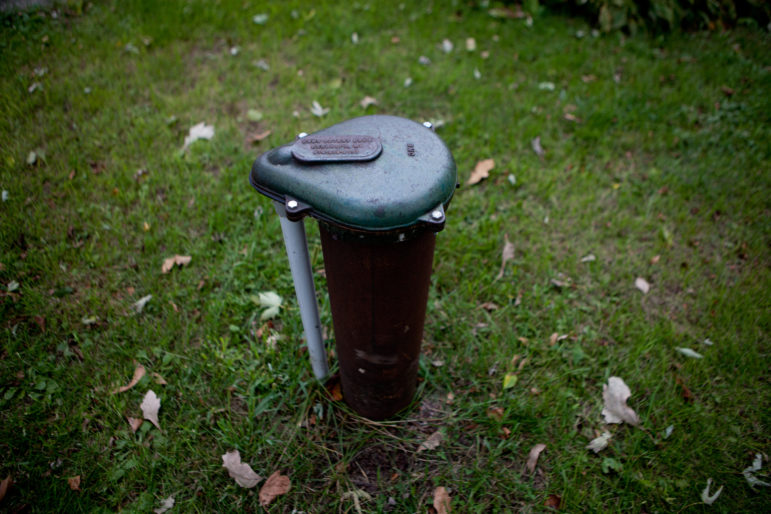
In 2014, Doug and Dawn Reeves discovered the well supplying water to their home in Stoughton, was contaminated with atrazine, despite the fact that they live in an area where its use has been banned for 20 years. Photo by Coburn Dukehart of the Wisconsin Center for Investigative Journalism.
In 2007, the most recent time DATCP released a comprehensive survey of pesticides in groundwater, the results were disturbing. Of 398 private wells, 33.5 percent had detectable levels of a pesticide or a pesticide metabolite, which is formed when the active ingredient or “parent” chemical breaks down as it penetrates soil.
At the time, the agency tested for 32 active ingredients. DATCP is now updating the study and testing for 98 ingredients, Senger said.
Wisconsin regulators have long known the dangers of atrazine. In 1991, the state put in place a rule that allowed DATCP to set maximum application rates and prohibit atrazine use outright in certain areas. There are currently 101 prohibition areas in the state covering 1.1 million acres. The last was added in 2011.
During the most recent round of testing, “We have found a few very localized groundwater problems,” DATCP spokeswoman Donna Gilson said. Those results “have not shown the need to create large new (atrazine prohibition) zones,” she said.
Gilson said establishing or enlarging an existing zone is a two-year process, so DATCP instead has reached voluntary agreements with individual farmers who agree to stop using atrazine or simazine, a pesticide that share metabolites with atrazine.
She said such agreements were recently used to prohibit simazine use in two locations near Spring Green and use of atrazine in another location near Reedsburg.
“Again, we reserve this process for when the investigation points to very localized agricultural use of a pesticide, when it doesn’t make sense to use the full two-year rule process,” Gilson said.
Municipal well shut down
About 30 years ago, low levels of atrazine began showing up in one of the village of Dane’s drinking water wells. Half of the village is within an atrazine prohibition zone and half is not.
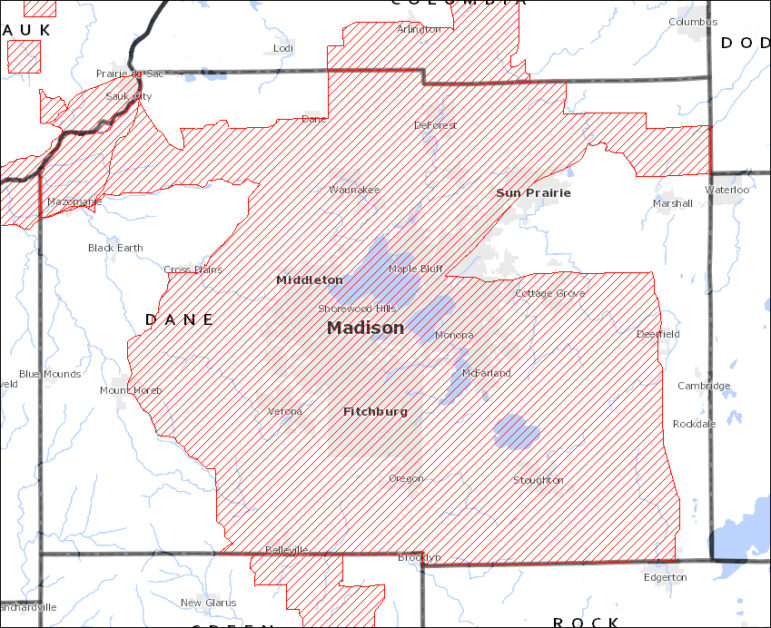
Much of Dane County., lies within an atrazine prohibition area. Wisconsin began setting up these zones 25 years ago when high levels of the herbicide began showing up in drinking water. Map from the Wisconsin Department of Agriculture, Trade and Consumer Protection.
Dave Koenig, public works director for the village about 15 miles north of Madison, said the small community is “surrounded by farms (and) every farmer used atrazine in the ‘60s, ‘70s, ‘80s and early ‘90s.”
Atrazine levels had fluctuated in the well for years as Koenig kept constant watch. The village’s water never went above 0.9 ppb, less than one-third the state health standard, but officials decided to shut it down anyway. The well was abandoned in 2014.
Atrazine: Popular in U.S., banned in Europe
The U.S. EPA is considering additional restrictions on atrazine, which is undergoing a 15-year review. Citing harmful effects to animals, EPA’s draft risk assessment proposes new restrictions that agricultural interests including the Wisconsin Corn Growers Association say would “effectively ban” use of the chemical in about 100 herbicide mixes.
The agency is recommending a maximum of 3.4 parts per billion of atrazine in surface water to protect plant and animal life, compared to the current level of concern of 10 ppb; opponents cite research that has found 25 ppb and higher to be safe. The Senate governmental affairs committee, which Johnson chairs, is examining the effects that the proposed EPA rules could have on farmers.
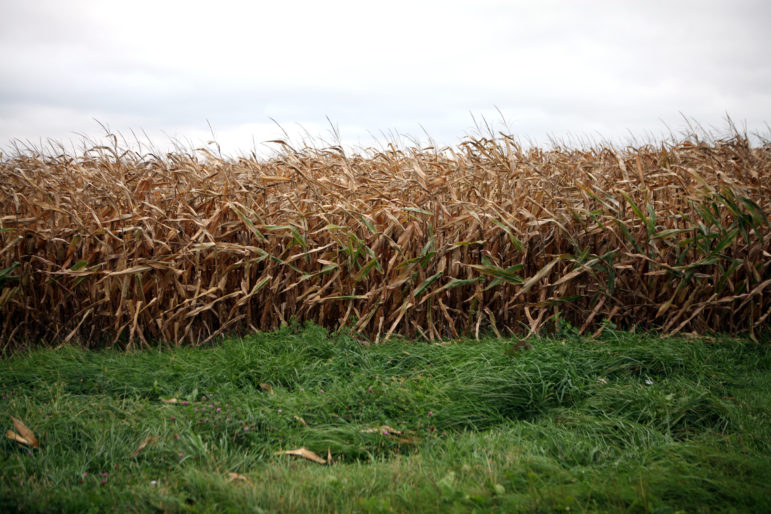
A cornfield is seen in Dane County, where atrazine is prohibited. Since 1991, the state has created atrazine prohibition zones in areas where drinking water has been contaminated with the agricultural chemical. Photo by Coburn Dukehart of the Wisconsin Center for Investigative Journalism.
At a committee hearing Aug. 17, Jim Zimmerman, a Rosendale farmer and National Corn Growers Association board member, testified, “Without atrazine, farmers would have to use higher quantities of other herbicides that are less effective.” He also predicted that lowering the threshold would increase tillage, which disturbs the land, “threatening soil health and nutrients.”
Bill Gnatzig, president of the Wisconsin Pork Association, estimated that “farming without atrazine could cost corn farmers up to $30 to $59 per acre in yield loss and added tillage.”
Other countries have gone even further. Germany and Italy prohibited use of the chemical 25 years ago. The European Union banned it in full in 2004 — even in Switzerland, where Syngenta, the major producer of atrazine, is based.
Researcher: Regulation works
Joanna Ory was a USDA National Institute of Food and Agriculture pre-doctoral fellow at the University of California-Santa Cruz who studied Wisconsin’s approach to atrazine. She found that use of the herbicide has plummeted in Wisconsin, as has contamination of wells by atrazine.
“The rules that Wisconsin put into place — to create the prohibition areas as well as having the application rate limits — are pretty progressive and are the strictest of any state in the country,” Ory said.
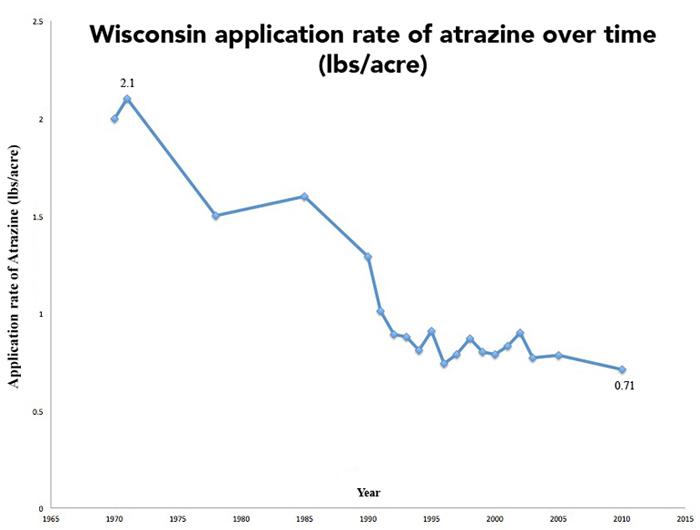
Published by Joanna Ory, 2015: Environmental Impacts of Restricting the Herbicide Atrazine in the US and Italy. University of California, Santa Cruz. Data Source: NASS, 2015 query and Wisconsin Statistical Reporting Services, 1971.
As part of her study, she analyzed DATCP’s groundwater sampling from 1985 to 2014, including 44,899 water samples. Of those, 59 percent were positive for atrazine, but just 0.2 percent exceeded the state health standard.
When comparing 3,719 samples from 610 wells, Ory found contamination decreased steadily, from an average of 3 ppb in 1992 to .67 ppb in 2013. She concluded that “the atrazine rule in Wisconsin is a policy that has contributed towards strong improvements in water quality protection.”
But the rule was not enough to protect the Reeves family. They live in the middle of a prohibition zone covering most of Dane County.

Jacob Reeves’ 2014-15 school picture, left, shows the effects of the steroids he was required to take at high levels during treatment for his juvenile dermatomyositis. A year later, after going off the drugs, most of the swelling had gone away. Photo courtesy of the Reeves Family.
Because the level of atrazine in the family’s well exceeded health standards, DATCP conducted an atrazine use and groundwater investigation. “I wanted to know why this outlawed poison was turning up in our water,” Dawn Reeves said.
The 298-page file obtained under the public records law by the Wisconsin Center for Investigative Journalism found no other neighboring wells tested positive for atrazine. Sales documents from the three years prior to the investigation showed no farmer in the surrounding area had purchased a product containing atrazine and none reported using atrazine since 1995 — the year the prohibition zone was put in place.
Officials were never able to find the source and closed the case.
“Could we have missed the point source?” Senger asked. “Certainly, it’s not a perfect process, and you can’t go out and poke a bunch of holes all over people’s properties. But we certainly did not find a smoking gun for use in the area or for spills or anything like that.”
Said Dawn Reeves: “Did the systems fail? Yes, every single one of them did.”
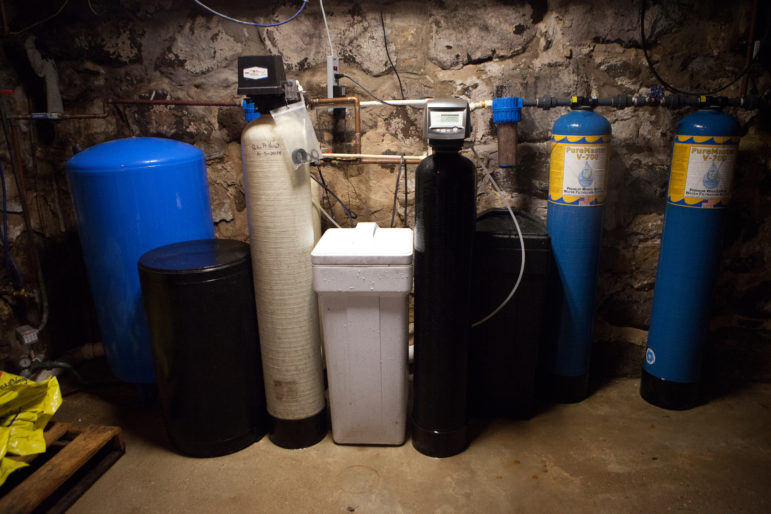
The water filtering system in the basement of Doug and Dawn Reeves’ home shows the efforts the couple has made to remove atrazine and other contaminants from their drinking water. That includes the two small blue tanks that remove sediments, the black tank that removes nitrate, and the two large blue tanks that remove volatile organic compounds, herbicides and pesticides. The large blue filters cost the Reeves family $1,500 a piece. There also is a reverse osmosis filter attached to the kitchen faucet. Photo by Coburn Dukehart of the Wisconsin Center for Investigative Journalism.
Advocates at Beyond Pesticides, a nonprofit based in Washington, D.C., that pushes to reduce pesticide use, question whether Wisconsin’s prohibition areas are enough to protect people’s health.
“Groundwater is incredibly fluid in its movement, and even if you protect some areas, it still has the possibility to spread,” Annie D’Amato, a Beyond Pesticides legal and policy associate, said in an email.
Reeves said her family has decided not to apply for help from the Department of Natural Resources’ well compensation program for that very reason.
“They want us to put in a new well with no guarantees that when we dig it, we’re not going to be poisoned anyway,” she said. “I would probably put in a new well if they would guarantee me that the well would be clean.”
Reeves said the good news is that the family has installed new filters that do take out the contaminants. “But I ask myself: How many other poisons will turn up next?”
Atrazine falls, other herbicides spike

University of California-Santa Cruz researcher Joanna Ory found Wisconsin’s atrazine regulations have reduced drinking water contamination. Photo courtesy of Joanna Ory.
A similar question is posed in another portion of Ory’s research. She found that in Wisconsin, decreased atrazine use has been accompanied by a large increase in use of other herbicides on corn fields, including glyphosate, whose health effects are unclear.
The World Health Organization has declared it a “probable human carcinogen,” but the National Pesticide Information Center, a project of the EPA, has said there are “conflicting results on whether the use of glyphosate containing products is associated with cancer.”
Ory said there may be negative synergistic effects if groundwater contains a “chemical soup” of pesticides. Wisconsin’s current groundwater law does not set a standard for total pesticides in water, nor is there a standard set nationally by the EPA. The European Union’s standard is 0.5 ppb.
DATCP’s Senger expressed similar concerns.
“My biggest concerns are in the cocktail of very low impacts of pesticides and their metabolites that are showing up in wells,” Senger said. “So you’ll find four or five of these pesticide components in a water sample, and you don’t know what to tell the homeowners.”
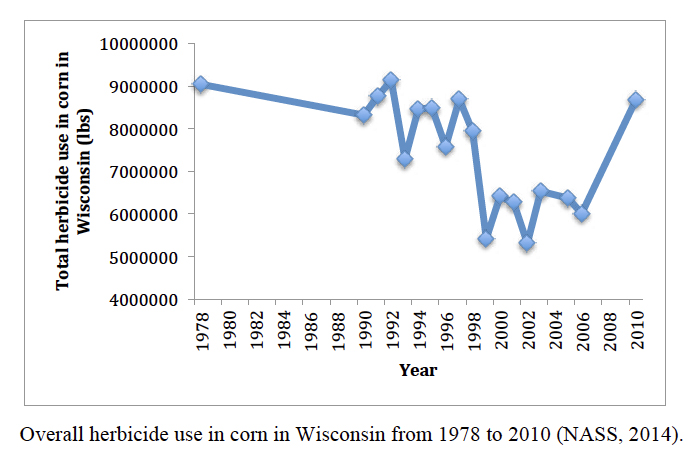
Using data from the National Agricultural Statistics Service, researcher Joanna Ory found that the reduction in atrazine use in Wisconsin has been accompanied by an increase in the use of other herbicides in recent years. Graph courtesy of Joanna Ory.
Contamination ‘life changing’
As for the Reeves family, the dissolved organic carbon and reverse osmosis filtration systems they installed gave them some peace of mind. But it came at a high price.
Jacob’s treatment — a regimen of “wicked drugs” that Reeves described as fighting poison with poison — finally ended in August. She estimates the filters cost more than $3,000; plus a family friend paid for six months of bottled water. Reeves said she even threw out most of the food she canned from her garden.
“So every time I went to make a meal and wanted to use canned tomatoes or something, almost every single time I just poured it out, because I thought, ‘How are we ever going to know whether it’s poisoned or not?’”

Jacob Reeves plays with his younger brother, Billy, foreground, at their home in rural Stoughton. In 2014, Jacob was diagnosed with juvenile dermatomyositis — a rare disease that his mother Dawn attributes to the high level of atrazine found in their well water. Photo by Coburn Dukehart of the Wisconsin Center for Investigative Journalism.
Reeves and her husband want to sell their house. But, she added, “I don’t want to sell something that will hurt anybody else. We would never sell it to anybody unless they understand the whole spectrum of it.”
Reeves said she is angry that all of the steps she and Doug took to protect their children were undermined by contaminated water.
“For us, we grew our own food. We kept them at home and home schooled them. We did it all on purpose to try to keep our kids healthy. And then only to find out that despite everything we were trying to do to try to keep them healthier, that some poison in our water turned it all upside down,” Dawn Reeves said.
“We went from living life one way to completely living it another. It was entirely upsetting. So what was it like? It was life changing.”
Reporter Tierney King contributed to this report. This story was produced as part of The Confluence, a collaborative project involving the Wisconsin Center for Investigative Journalism and University of Wisconsin-Madison School of Journalism and Mass Communication reporting classes. The nonprofit Wisconsin Center for Investigative Journalism (www.WisconsinWatch.org) collaborates with Wisconsin Public Radio, Wisconsin Public Television, other news media and the UW-Madison journalism school. All works created, published, posted or disseminated by the Center do not necessarily reflect the views or opinions of UW-Madison or any of its affiliates.
Tainted Water
-
Fecal Microbes In 60% of Sampled Wells
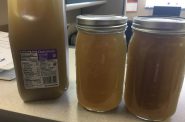 Jun 12th, 2017 by Coburn Dukehart
Jun 12th, 2017 by Coburn Dukehart
-
State’s Failures On Lead Pipes
 Jan 15th, 2017 by Cara Lombardo and Dee J. Hall
Jan 15th, 2017 by Cara Lombardo and Dee J. Hall
-
Lax Rules Expose Kids To Lead-Tainted Water
 Dec 19th, 2016 by Cara Lombardo and Dee J. Hall
Dec 19th, 2016 by Cara Lombardo and Dee J. Hall


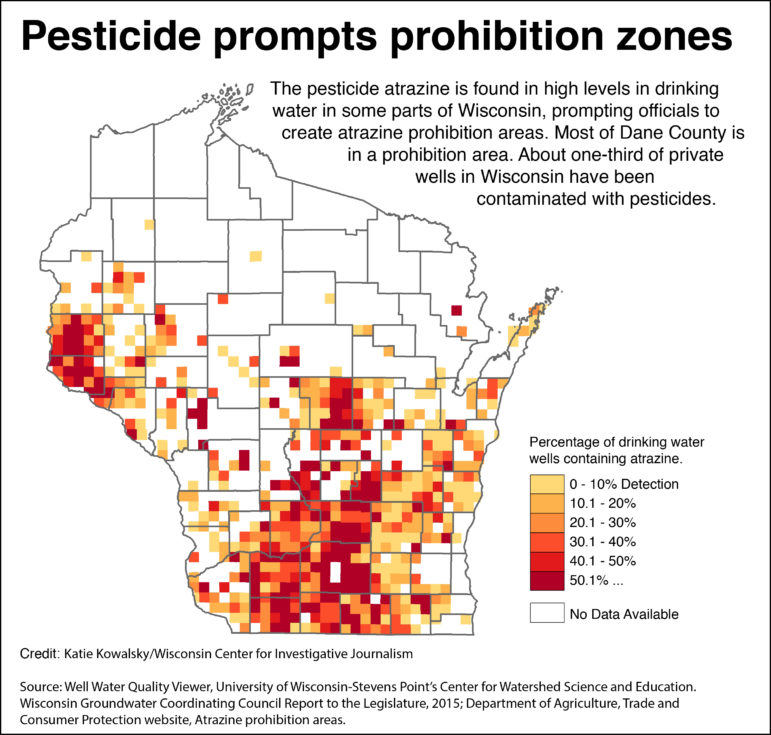















Paging doesn’t work
@steenwyr Thanks I removed the paging..